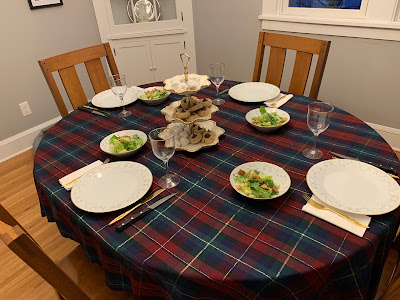Since the beginning of musical recordings, music has been primarily pressed or etched into a record that people could take home and play. Even before the radio existed, broadcasting music into people's lives, phonographs existed, allowing people to enjoy music of their choice in their homes.
From the phonograph, to the record player, and then a flurry of changes -- 8-track tapes, cassette tapes, CD's, to streaming services. Nothing has changed the way people enjoy music like streaming services. Artists no longer need to sign a record deal to get access to those magical machines that etch songs into discs, they can just record it and release it. As such, consumers no longer purchase entire albums, nor even know all of the songs that may be released at once in the artist's vision of a story arc or flow.
I grew up during the era when music was moving from 8-track to cassette tapes. My Walkman was my most prized possession in high school. I'd had the unfortunate experience of having a tape player "eat" a cassette tape one too many times to want to buy my music in that format. I insisted on buying albums that I would then dub onto cassette so I could take my music with me. At least if the tape wore out I could re-dub the album again.
Sure enough, those albums lasted for decades. I foolishly gave away or donated most of them in my 30s, when our home was overrun with children's toys and supplies. How ironic, making a wise investment decision in my teens to a foolish one as an adult.
One of my favorite bands of the 80's was U2, and I could not wait for their newest release, The Joshua Tree, to come out. I asked for it for my birthday, and was thrilled to open it. I unwrapped the plastic wrap and carefully slid the album out from the cover. I took in the smell of a new record, a combination of ink from the lyrics written on the sleeve and petroleum from the record itself.
After the birthday festivities were done, I took the record over to our record player and played it song by song. I laid on the floor with a pillow and read every word of the lyrics, gazing at the photos of the band members, reading the credits and imagining the process of writing songs with The Edge, Bono, and other contributors whose names I didn't know.
Which is why, when my dear friend Lisa, who I first met when I was in 6th grade, asked me if I'd like to go to a concert called "Classic Albums Live: U2's The Joshua Tree," I immediately said yes. Of course. And yes, it was not Bono on stage. And yes, it was in a concert hall with people who politely sat in their seats, instead of dancing, even though I wanted to dance. The goal of "Classic Albums Live" performers is to play a classic album note-for-note, word-for-word, as close to the original as possible.
I remembered every single word to every song, even those that never played on the radio. I was transported back to high school, specifically my drive to my saxophone lessons, the one time each week when I spent 20 minutes in my mom's Mazda 626 by myself, able to play any music I wanted as loudly as I wanted because she wasn't a passenger in the car.
My friend Lisa has a distinct memory of "One Tree Hill," because she was listening to it when a coach or someone important in her life told her she was a really good runner (she was a member of the high school cross country team). She associated that positive feedback and the encouragement it gave her to that song, which happened to be playing in her ears at the time.
Together, she and I sat in a darkened concert hall and were transported back immediately to our high school days, which, thankfully for us both, were some of the most memorable and special years of our friendship.
What a gift to share this special evening with a long-time friend!


















